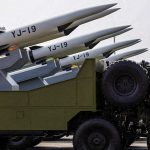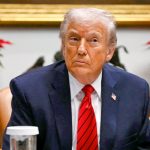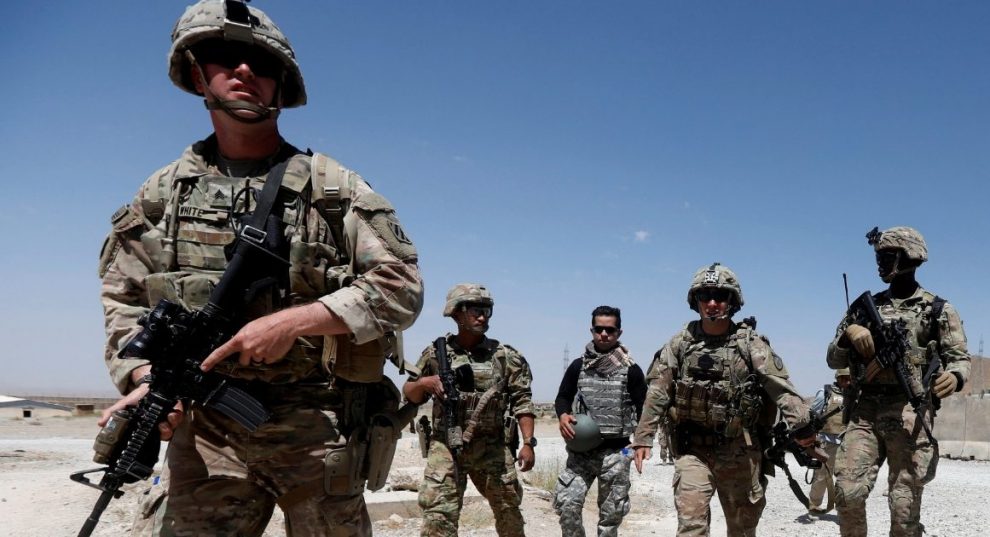President Donald Trump is looking to end his presidency by quickly pulling some U.S. troops out of Mideast engagements.
It’s not a full withdrawal, according to draft documents that have been circulating since Monday. Instead, the Pentagon would cut the number of U.S. forces in Afghanistan from 4,500 to somewhere between 2,000 to 2,500 troops by the time Trump leaves office in January. The U.S. would also reduce troop levels in Iraq and Somalia.
This would appear at a glance to be good news for the majority of Americans who would like to see American servicemembers brought home from the Middle East and our military interventions ended. But the speed of the drawdown has been resisted internally, and recently fired Defense Secretary Mark Esper had questioned its acceleration. Esper, in a classified memo, warned that a rapid pullout would endanger troops remaining behind and jeopardize peace negotiations between the Taliban and the Afghanistan government.
The removal is, for rather predictable reasons, being attacked from both sides. After nearly 20 years of occupation, some prominent conservatives insist that our continued armed presence in the Middle East is necessary to protect America from terrorism, with little evidence that Afghanistan’s occupation has actually made us domestically safer. Rep. Dan Crenshaw (R–Texas), himself a military veteran, opined on Twitter, “Withdrawing troops rapidly might make some people feel better, but it won’t be good for American security. We will be right back in the same place as pre-9/11. No deterrence, no situational awareness, vulnerable to emboldened terrorists.”
The idea that we had no methods of deterrence and no situational awareness to terrorist threats prior to the September 11 attacks is simply nonsense. And asking thousands of American troops to stand between Afghanistan’s government and insurgent groups isn’t going to make America more secure.
Among Democrats, the emergent talking point is that they want to remove troops from Afghanistan, but not like this. Sen. Tammy Duckworth (D–Ill.), also a military veteran, worries that removing troops in a politically expedient timeline puts the troops in danger:
Iraq War Veteran Sen. Tammy Duckworth (D-IL) on Trump's Afghanistan and Iraq troop drawdown:
"All of the military commanders have spoken up and said this is the wrong thing to do. We want our troops home, but let's not bring them home in body bags." pic.twitter.com/rGSBCxXDmP
— The Recount (@therecount) November 17, 2020
Meanwhile, peace negotiations between the Taliban and Afghan government are being threatened by an uptick in violence by the Taliban in October. Deaths and injuries of civilians have been increasing each quarter of 2020, according to the latest quarterly report from the Office of the Special Inspector General for Afghanistan Reconstruction (SIGAR). The Department of Defense acknowledges that these violence levels are “unacceptably high” and might undermine the peace agreement. There have been 876 reported killings of civilians in Afghanistan between July and September due to conflicts, the vast majority of them (more than 80 percent) due to antigovernment insurgents.
Trump may be acting “political” by demanding a fast troop withdrawal, but is it really a bad move absent his personal motivations?
“At the end of the day there will be very little consequence in this partial withdrawal,” John Glaser, the Cato Institute’s director of foreign policy studies, tells Reason. “It’s not necessarily worse than leaving troop numbers where they are now, but my sense is that the change itself will not have a significant impact on the ground.”
That’s because we also have 20,000 Pentagon contractors in Afghanistan, Glaser notes, and 8,000 of them are American. We may be removing members of the military, but America’s footprint in Afghanistan will remain large even if Trump gets his way. And Glaser is blunt that Trump’s decisions seem more focused on creating an antiwar reputation rather than being an antiwar president.
“The choice should be whether to continue a lost war or to pursue a coherent strategy to withdraw completely and as soon as possible,” Glaser says. “Trump evidently failed to do the latter, so he has done the former by default. And now in his last few weeks as a lame-duck president, I think he is making these hurried decisions in order to solidify his foreign policy legacy as an opponent of endless wars, instead of someone who perpetuated them while occasionally employing slogans about opposing them.”
Glaser notes that President-elect Joe Biden’s plan don’t actually call for a complete pull-out of Afghanistan either. Biden still wants a contingent of counter-terrorism forces there to keep fighting terrorism.
“To me, that sounds like the same old gruel we’ve been fed since the Bush administration,” Glaser says. “So, that is worrying.”
Glaser and Cato Senior Fellow John Mueller wrote a commentary piece in March noting that while the current, troubled peace agreement in Afghanistan is not ideal, Afghanistan’s problems can’t be solved by U.S. occupation and the only true solution is for the United States to leave entirely. He says that assessment still stands.
“I can’t predict Afghanistan’s future, but it sure isn’t likely to be a lot of sunshine and lollipops,” he says. “That stubborn reality is a big reason we should have left a long time ago: Part of our mission has been to transform Afghanistan into something it is not.”
Story cited here.
























